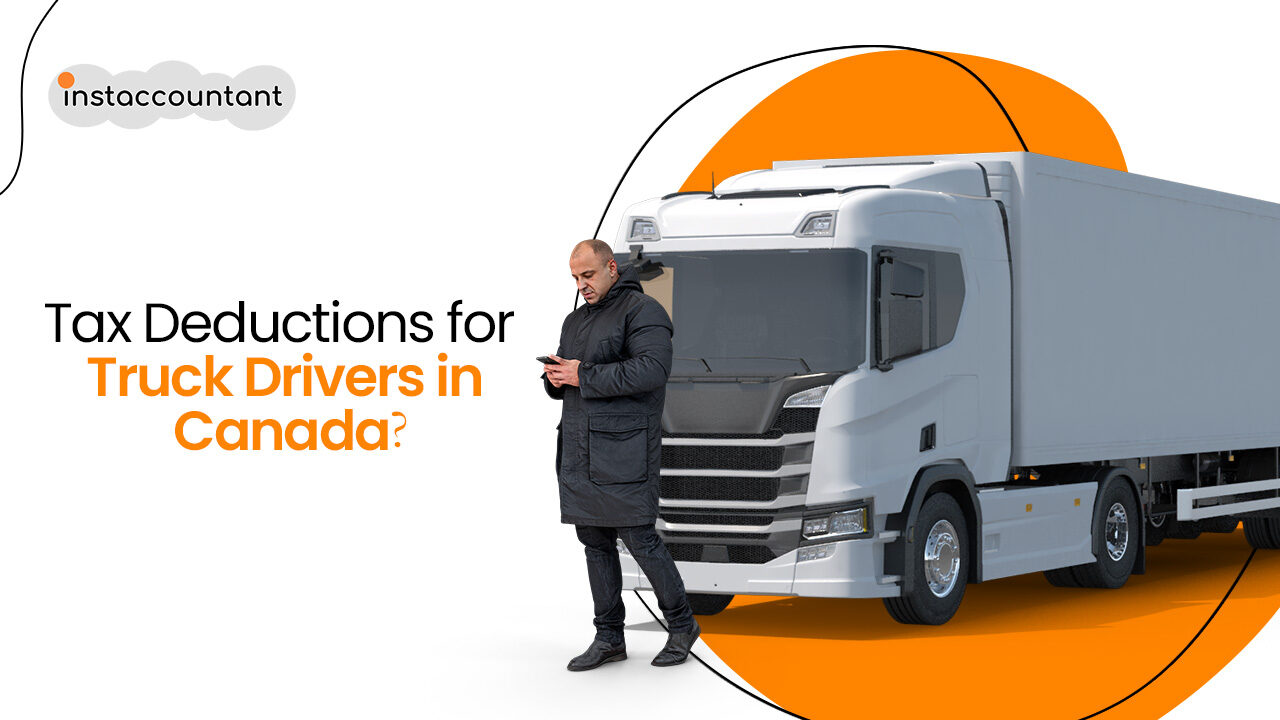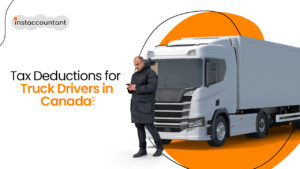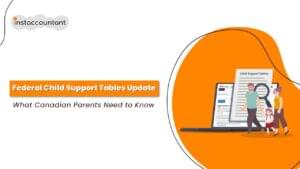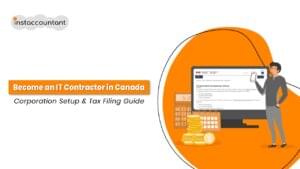If you’re a truck driver in Canada, the right tax deductions can meaningfully reduce what you owe. Yet most drivers don’t have time to research all the credits, forms, and CRA rules, and money is left on the table. This guide explains tax deductions for truck drivers in Canada, with clear rules for meal deductions (including the long-haul 80% rate), lodging and shower expenses, U.S. trip claims, cell phone and other work costs, and vehicle-related write-offs for owner-operators. It also shows which forms (TL2, T2200) you’ll need, how to log trips, and where to claim on your return (line 22900).
What is a tax deduction (and why it matters to truckers)?
A tax deduction is an eligible expense you subtract from your income so the CRA taxes a smaller amount. For transport employees, the big buckets are meals, lodging (including showers), and other employment expenses required for the job. You claim these on line 22900 of your return and keep the TL2 on file (signed by your employer); you don’t mail it unless the CRA asks.
Meal expenses for truck drivers (standard 50% vs. long-haul 80%)
You can deduct a portion of the meals you buy while performing your duties:
- Standard rule: Deduct 50% of eligible meal costs.
- Long-haul rule: If you qualify as a long-haul truck driver, you can deduct 80% of meals.
Who is long-haul? Generally, you’re operating a truck designed to haul freight and you’re away on an eligible travel period at least 160 km from your employer’s establishment where you normally report, and away for 24 hours or more. (Keep a logbook or equivalent proof.)
Three ways to claim meals
- Simplified method: Count up to 3 meals per day and claim $23 per meal; no receipts required (but keep trip details). Apply the 50% or 80% rate, depending on eligibility.
- Detailed method: Keep receipts and claim your actual meal costs (then apply 50% or 80%).
- Batching method: If you buy groceries and cook your meals, you may use a daily batching allowance (no receipts up to a set daily cap). (CRA guidance focuses primarily on simplified vs. detailed; confirm your approach with your preparer and keep records consistent with the TL2.)
Important: Subtract any nontaxable meal allowances or reimbursements your employer paid from your total before calculating the deduction. Keep your TL2 (employer certification) with your files.
Trips to the United States (meal rate & conversion)
On cross-border runs, you can still deduct meals. With the simplified method, the CRA lets you claim US $23 per meal (up to 3/day). Convert the total to CAD when you file, and apply 50% (or 80% if you meet long-haul rules).
Lodging & shower expenses (Canada and U.S.)
When the job keeps you on the road overnight, you can claim lodging (hotel/motel) and showers (for example, when you sleep in the cab). Keep receipts and trip logs showing dates, locations, and distances. U.S. lodging is also eligible just convert to CAD for your return. Claim these on line 22900 and retain your TL2; you don’t send it unless requested.
Cell phone & communication costs
You can deduct the work-related portion of your cell phone plan (and data), as long as usage is required to perform your duties. Allocate reasonably between personal and employment use and keep statements in case the CRA asks. (If your employer reimburses you tax-free, deduct that from your claim.)
Other common write-offs for truckers (employment)
Depending on your role and employment agreement (often supported by Form T2200), you may also be able to claim:
- Licensing, permits, exams, and association/union dues required for work
- Protective clothing / safety gear (e.g., boots, gloves) used for your job
- Small tools & supplies used directly in your duties
- Parking, tolls, and other travel-related employment costs (if required to pay)
- Potential GST/HST employee rebate on some employment expenses you claim
Ask your employer to complete T2200 (Declaration of Conditions of Employment) if you need to support that you’re required to pay certain expenses as part of your job. The CRA guide T4044 (Employment Expenses) explains the rules and signatures (electronic signatures are accepted).
Owner-operators & self-employed drivers: vehicle, fuel, and CCA
If you’re an owner-operator (self-employed), you typically claim a wider set of business expenses: fuel, maintenance, insurance, licensing, tires, interest/lease costs, and, if you own the truck, Capital Cost Allowance (CCA) depreciation.
- Many commercial trucks fall in CCA Class 10 or 10.1 at 30% (half-year rule applies in year of acquisition).
- If you lease your truck, you don’t claim CCA; you deduct lease payments instead (subject to limits).
- Emerging rules can apply to zero-emission trucks (separate CCA classes with accelerated rates).
Be sure to categorize properly and keep purchase/lease agreements on file.
Note: Employees usually don’t claim CCA on an employer-required vehicle; CCA is generally a business (self-employed) deduction. Confirm with your preparer which category you’re in.
The paperwork: forms, logs, and where to claim
- TL2 – Claim for Meals and Lodging Expenses: You complete Parts 1–2; your employer signs Part 3. Keep it in your records (don’t mail unless asked).
- T2200 – Declaration of Conditions of Employment: Supports that you must pay certain expenses to do your job (often needed for broader employment expense claims). Guide T4044 has details; CRA accepts electronic signatures.
- Where to claim: Employment expenses go on line 22900 of your return.
- Logs & receipts: Keep trip logs (dates/times, kilometers, routes), meal counts, hotel/shower receipts, and phone bills to support claims.
Quick checklist (use before filing)
- Confirm whether you’re standard (50%) or long-haul (80%) for meals.
- Pick a method: simplified ($23/meal) or detailed (actual receipts).
- For U.S. trips, use US $23/meal and convert to CAD.
- Subtract nontaxable allowances from your totals.
- Keep TL2 signed; claim on line 22900.
- Owner-operators: categorize fuel/maintenance/insurance/lease/CCA
What tax deductions can Canadian truck drivers claim?
Meals (50% standard or 80% for long-haul), lodging and showers on eligible trips, and other employment expenses required for your job (with proper forms). Owner-operators can also claim fuel, maintenance, insurance, and CCA (if they own the truck).
How much can I deduct for meals as a long-haul trucker?
Up to 80% of eligible meal expenses, using either the simplified $23/meal method (max 3/day) or actual receipts under the detailed method.
Do I need receipts for meal deductions?
Not when you use the simplified method; you still need trip details. For detailed claims and for lodging/showers, keep receipts.
What is Form TL2 and do I mail it with my return?
TL2 documents your meal/lodging claims and requires your employer’s certification. Keep it on file; don’t send it unless the CRA asks.
Can I get the meal per-diem on U.S. runs?
Yes US $23 per meal under the simplified method; convert to CAD and apply the correct (50% or 80%) rate.
Can I claim my cell phone bill?
You can claim the work-use portion if it’s required for your duties; allocate reasonably and keep statements.
How does CCA work for my truck? (Owner-operators)
Most trucks are Class 10/10.1 at 30% (half-year rule in the first year). If you lease, deduct lease payments instead of CCA. Check if a zero-emission vehicle qualifies for accelerated classes.
Bottom line
For Canadian truck drivers, understanding the CRA rules on meals, lodging, U.S. trips, and work expenses can significantly reduce your tax bill. Long-haul drivers benefit most from the 80% meal deduction but only when eligibility and logs are clear. Keep your TL2 (and T2200 where needed), track trips carefully, subtract employer allowances, and file your expenses on line 22900. If you’re an owner-operator, don’t forget fuel, maintenance, insurance, lease costs, and CCA where applicable.





